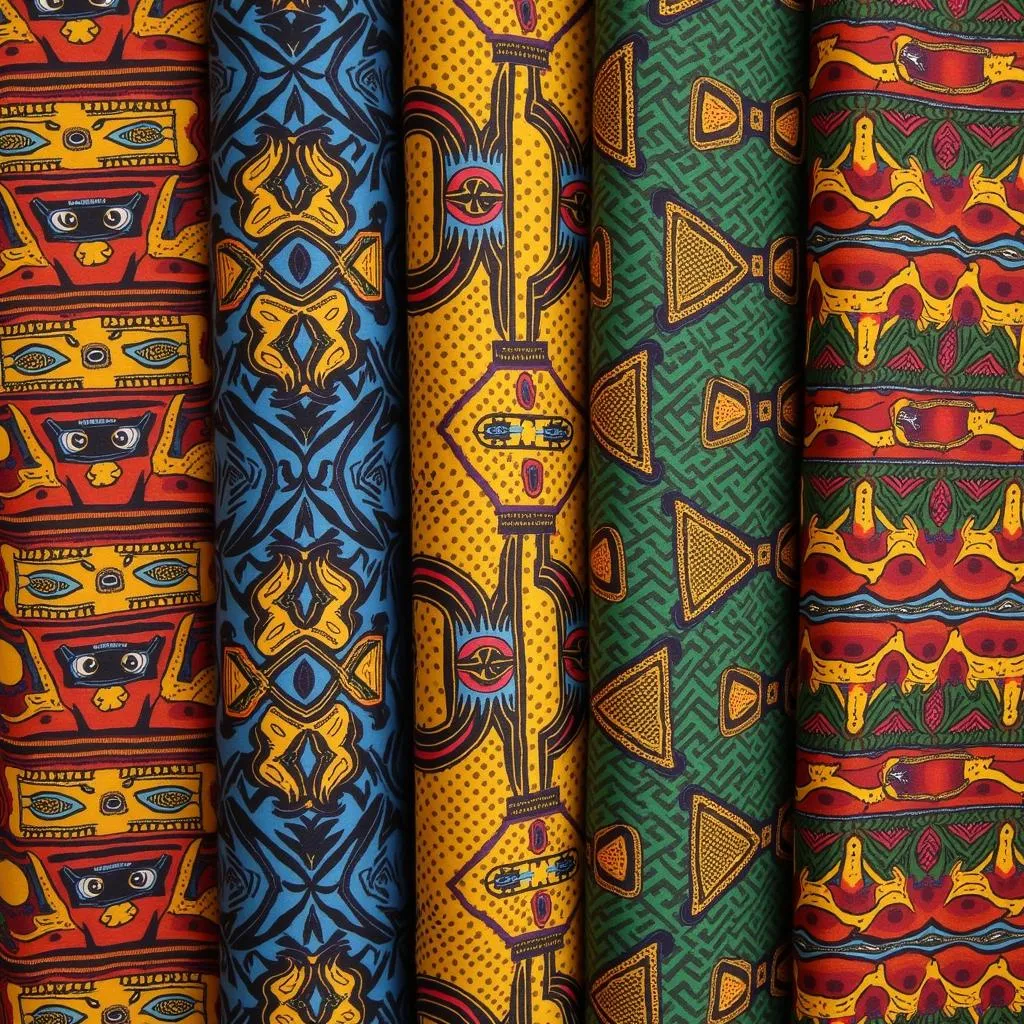African Kente Cloth Styles: A Vibrant Tapestry of History, Culture, and Fashion
Kente cloth, with its intricate patterns and vibrant colors, is more than just fabric; it’s a symbol of rich African heritage, cultural identity, and artistic expression. This iconic cloth, originating from the Ashanti people of Ghana, has become a staple in African fashion and a global symbol of pride and beauty. In this article, we’ll delve into the fascinating world of kente cloth styles, exploring their history, symbolism, significance, and contemporary relevance.
A Legacy of Woven Stories: The History of Kente Cloth
The origins of kente cloth can be traced back centuries, deeply rooted in the Ashanti culture of Ghana. The word “kente” itself is believed to have originated from the Akan word “kenten,” meaning “basket,” reflecting the woven structure of the cloth. The Ashanti people, renowned for their craftsmanship and artistic mastery, meticulously hand-weaved this fabric using narrow strips of hand-spun silk and cotton threads.
The creation of kente cloth was not merely a craft; it was an intricate art form passed down through generations. Each pattern and color held specific meanings and significance, representing various aspects of Ashanti life, history, and beliefs. For instance, the color red might symbolize war or courage, while black could represent mourning or wisdom.
Unveiling the Patterns: Symbolism and Meaning
The beauty of kente cloth lies not only in its visual appeal but also in its profound symbolism. Each pattern, known as an “adinkra,” carries a unique story, often conveying proverbs, historical events, or philosophical ideals.
Here are some notable kente cloth patterns and their meanings:
- “Adinkra” (meaning “adinkra”): A symbol of wisdom and intellectual pursuit, representing the pursuit of knowledge and understanding.
- “Akoko Nana” (meaning “grand mother’s hen”): This pattern signifies the importance of family, respect for elders, and nurturing qualities.
- “Ahenemma” (meaning “the lion”): A powerful symbol of strength, courage, and leadership, representing the Ashanti king’s authority.
- “Akonoba” (meaning “the spider”): This intricate pattern symbolizes resilience, resourcefulness, and the importance of planning and foresight.
From Traditional to Contemporary: The Evolution of Kente Cloth Styles
Kente cloth has long been a significant part of traditional Ashanti ceremonies and attire. It’s used for special occasions like weddings, funerals, and festivals, where it’s worn as ceremonial robes, stoles, or even incorporated into elaborate headdresses.
Over time, kente cloth has transcended its traditional boundaries and found its way into modern fashion. Designers around the world have embraced the vibrant colors and intricate patterns, incorporating kente into contemporary designs.
From elegant dresses to bold accessories, kente cloth is now a global symbol of African style and heritage. Its versatility allows for its integration into various fashion trends, adding a touch of cultural richness to any garment or accessory.
The Enduring Legacy: The Impact of Kente Cloth
Kente cloth continues to hold a deep cultural significance, not only in Ghana but also across the African diaspora. It’s a visible reminder of the resilience and creativity of African people, a testament to the power of art and tradition to transcend time and borders.
The vibrant colors, intricate patterns, and rich symbolism of kente cloth continue to captivate and inspire audiences worldwide. It’s a cultural treasure that embodies the beauty and strength of African heritage, reminding us of the importance of embracing our roots and celebrating our diverse cultural identities.
 A selection of vibrant Kente cloth fabrics on display in Ghana, illustrating a variety of intricate patterns and color combinations
A selection of vibrant Kente cloth fabrics on display in Ghana, illustrating a variety of intricate patterns and color combinations
Why is kente cloth so important?
Kente cloth is significant for numerous reasons:
- Cultural Identity: It serves as a visual representation of Ashanti heritage and cultural pride, uniting people through shared symbolism and traditions.
- Artistic Expression: The intricate weaving process and patterns showcase the artistic mastery and ingenuity of the Ashanti people.
- Historical Preservation: Each pattern holds a historical narrative, preserving stories, proverbs, and cultural knowledge for future generations.
- Global Symbol: Kente cloth has transcended its regional origins, becoming a globally recognized symbol of African heritage and beauty.
How is kente cloth used today?
Kente cloth continues to be used in various ways:
- Traditional Attire: It remains a staple in Ashanti ceremonies, festivals, and celebrations, reflecting the enduring importance of cultural traditions.
- Modern Fashion: Designers worldwide incorporate kente cloth into contemporary designs, blending traditional elements with modern aesthetics.
- Home Decor: Kente cloth is used to create decorative pieces, such as wall hangings, pillows, and tablecloths, adding a touch of African flair to homes.
What are some popular kente cloth styles?
There are numerous kente cloth styles, each with its unique patterns and colors. Some popular styles include:
- Ahenemma: Known for its bold red and black stripes, representing strength and leadership.
- Akoko Nana: Featuring a pattern of small squares with alternating colors, symbolizing family and respect for elders.
- Akonoba: This intricate pattern, resembling a spider’s web, signifies resilience and foresight.
Conclusion: A Tapestry of Beauty and Tradition
Kente cloth stands as a testament to the enduring power of art, culture, and tradition. Its vibrant colors, intricate patterns, and profound symbolism continue to inspire and captivate audiences worldwide. From its origins in Ashanti culture to its global reach, kente cloth remains a powerful symbol of African heritage, beauty, and resilience.
Remember: When purchasing kente cloth, it’s essential to support ethical and sustainable practices that ensure the preservation of this cultural treasure for future generations.
